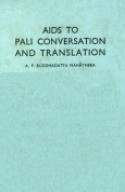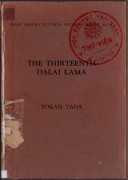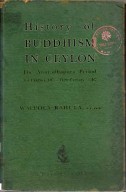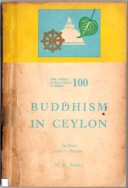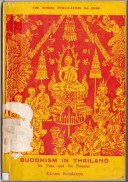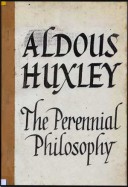PREFACE
In 1928 I brought out a Handbook on Pali Conversation entitled Tribhãshãratnãkara. It contained collections of important words, lessons in Pali conversation, giving meanings in both Sinhalese and English, and a few passages as exercises in translation. When I sent a complimentary copy of this book to the late Professor Geiger, he wrote to me as follows :—
‘I have now with great care perused your Handbook on Pali Conversation, and I think it is an excellent introduction into Pali composition. It would be very useful, indeed, if you would continue the work and teach students also how to make more difficult compositions. I think it would be best to arrange the matter in the form of a conversation between two persons, for instance: between two friends wandering through the island (talking about time, weather, country, trees, roads, etc.)—or between a farmer and his wife (daily and family life, education of the children, health and disease, agricultural work, popular belief, etc.)—or between two members of the state Council (on politics, economic questions; the translation from a newspaper’s report on a meeting would be highly interesting)—or between a priest and his pupil (on philosophical and religious subjects). Letters, correspondence between two scholars or between merchants about business life, would also be useful. And I should advise you to render each sentence in English, Pali, and Sinhalese as you did in your Handbook, for this is highly instructive, I think, for both European and Sinhalese students’.
It is of course not impossible to compile such a work in the form that Professor Geiger has indicated, but it would be too voluminous a work, for which it might be difficult to find a publisher and buyers. Thus I have decided to compile the present work as it is, small in volume, but yet an improvement on the Tribhãshãratnãkara. I have, however, dropped the Sinhalese in order to lessen the volume and make it more suitable for European students.
This was compiled many years ago, but the publication was delayed year after year on account of one reason or another. My New Pali Course is now widely used in Ceylon and abroad. The long-delayed Higher Pali Course for the advanced students is now out. It has therefore seemed appropriate to bring out this book as a supplement to those previous works. The list of 220 verbs together with theữ Past Participles and Absolutives, given here, is a subject that should have been included in the Higher Pali Course. Letter-writing is another subject which should have been included there, but excluded from it in order to make the volume handy.
This book consists of three parts of which the first includes ‘words in groups’, such as ‘Relations’, ‘Victuals’. The second is on conversation dealing with various topics, and the third constitutes translation. All words found in the separate portions are given in the vocabulary together with their meanings, first Pali-English and secondly English-Pali. In the third part, to begin with, there are some easy passages from popular stories and fables, and then somewhat more difficult selections such as ‘How Kãlidãsa became a Poet’, and lastly some passages, relating to historical facts, from a commentary on the Abhidhamma; finally some more passages are given in the nature of essays on some ancient universities of India and Tibet.
In the section on Letter-writing I have included some actual Pali letters sent to me by Professor Geiger, and some letters sent to him by myself. I possess some more such Pali letters which shall be included in a future edition if the students may need them.
Some years ago when I handed my manuscript to Dr. G. P. Malalasekara, M.A., D.Litt., Professor of Pali, University of Ceylon, he made some suggestions for the improvement of the work. One of the suggestions was to arrange the words, given in a group, in alphabetical order. Accordingly, I have arranged each group in the alphabetical order. My thanks are due to him for these suggestions and also some corrections in my English.
A. P. BUDDHADATTA.
Aggãrãma,
Ambalangoda.
TABLE OF CONTENTS
PART I
WORDS IN GROUPS
- Some important pronominal terms, etc……………….. 1
- Human Beings…………………………………………………. 2
- Persons according to theữ occupations………………….. 3
- Relations……………………………………………………………5
- Members, organs and component parts of the body….6
- Victuals………………………………………………………….. 7
- Vegetables, fruits and nuts………………………………… 9
- Garments and ornaments…………………………………… 9
- Parts of a house and building materials………………..10
- Things that are in a house………………………………… 11
- Trees and vines………………………………………………. 12
- Medicinal herbs and drugs……………………………….. 14
- Animals………………………………………………………… 14
- Birds and insects…………………………………………….15
- Gems and minerals………………………………………….16
- The universe…………………………………………………..17
- The earth……………………………………………………….17
- Water deposits and water-ways………………………… 18
- Public places and buildings in a country……………..19
- Things and persons pertaining to a city……………… 20
- Government…………………………………………………… 21
- Litigation………………………………………………………. 22
- Vehicles………………………………………………………… 23
- Diseases and medical treatment………………………… 24
- Stationery and printing……………………………………. 25
- Tools and implements…………………………………….. 26
- Buildings and other things in a monastery…………. 27
- Musical instruments……………………………………….. 28
- Time…………………………………………………………….. 28
- Days and months……………………………………………. 29
- Colours and tastes………………………………………….. 29
- Measures and weights……………………………………… 30
- Numerals………………………………………………………. 30
- Some adjectives……………………………………………… 33
- Indeclinables and adverbs………………………………… 35
- Some adverbial phrases, interjections, and addressing forms…. 37
- Various verbs (together with p.ps arid absolutives)……38
PART II
- General conversation I……………………………… 47
- General conversation II…………………………….. 48
- Orders and advice……………………………………. 50
- Conversation with a school boy…………………. 51
- Conversation between two farmers…………….. 54
- Conversation-between two merchants if……… 56
- About animals, buds, and insects……………….. 58
- About trees, fruits, flowers, etc………………….. 61
- About a dwelling house…………………………….. 64
- About a city………………………………………….. 66
- Government affairs………………………………… 69
- Patients and medical treatment………………… 73
- About Buddhist monasteries……………………. 76
- Conversation with a person come from Burma 79
- About the sacred places in Ceylon……………. 83
PART III
AIDS TO TRANSLATION
- The blind who carried a lamp……………………. 87
- The rich man and his poor brother…………….. 87
- The beggar who pretended to be dumb……….. 88
- How a lion was killed by a hare…………………. 89
- The bad result of an untimely setting off……… 90
- Two otters who disputed over a fish…………… 91
- The donkey in lion’s skin………………………….. 92
- How crows and owls became enemies…………. 93
- The power of unity………………………………….. 94
- Cleverness of a blind man……………………….. 95
- The tortoise who perished because of his own mouth……96
- The kind suffer through the wicked…………… 98
- Comparison with the sun and the moon……. 99
- Prince Jimiitavahana………………………………. 100
- Merchant Vitastãdatta and his son…………… 101
- Greatness of the Creator…………………………. 102
- How Kãlidãsa became a poet…………………… 103
- Robinson Crusoe and his attendant………….. 104
- Pilgrim’s dream……………………………………… 105
- Are the high-caste men compassionate?…….. 106
- Moderation in receiving alms…………………… 107
- Great influence of the virtuous…………………. 109
- The rebellion of Brahman Tissa in Ceylon I.. 110
- The rebellion of Brahman Tissa II…………….. 111
- When the great devastation was over………… 113
- The University of Takshasilã…………………… 115
- The University of Nãlandã………………………. 117
- The University of Odantapurĩ………………….. 118
- The University of Vikramasilã…………………. 120
- The University of Tashi-Lhunpo in Tibet….. 121
- Letter-writing………………………………………… 124
VOCABULARY
Pali-English………………………………………………… 134
English-Pali………………………………………………… 180
 Facebook
Facebook
 Google
Google
 Google+
Google+
